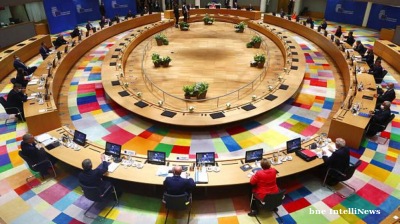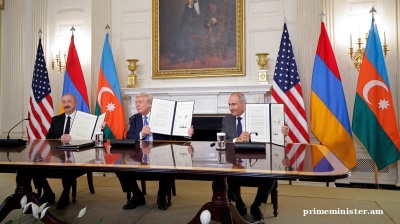Fleet-cannibalised Russian aviation can only look on as Central Asia carriers take over regional market segments

With the sanctions-hit Russian aviation industry beset by fleet cannibalisation in the face of a lack of spare parts, Kazakhstan looks poised to replace Russia as the leader in key regional aviation segments.
What’s more, Uzbek and other Central Asian airlines are also with increasing frequency moving to fill vacuums created by the demise of Russian aviation, safely and efficiently building market share in cross-border routes, diaspora services and transit corridors.
Those are two key conclusions reached by a July 17 article in The Times of Central Asia, which is quick to point to one of the most overlooked aviation developments of 2024, namely the announcement at a Central Asian Aviation Summit in Astana that regional countries were forming their own civil aviation regulatory body. As Amir Akhmetov, senior advisor to the director of the Aviation Administration of Kazakhstan, reflected: “In the changing geopolitical environment of the republics of Central Asia and the South Caucasus, together with like-minded countries, they are creating their own regional civil aviation organization, the Eurasian Civil Aviation Conference (EACAC).”
The initiative was first suggested by Kazakhstan in 2023 and also includes Kyrgyzstan, Uzbekistan, Tajikistan and Turkmenistan, as well as Armenia, Azerbaijan, Georgia, Moldova and Mongolia. The first EACAC meeting was held in Kazakh commercial capital Almaty last November.
Among Russian media, the move to form the EACAC did not go unnoticed. Versiya wrote: “It is hard not to notice that this is truly a momentous event in the field of civil aviation regulation within the EEU [Eurasian Economic Union] member states, aimed precisely at pushing Russia out of the process… which, after the formation of the announced structure, will de facto exist and be managed under direct Anglo-American influence.”
Critics will take issue with the merits of the observation on Anglo-American influence, but it appears that there is one huge factor in Central Asia’s increasing rise to prominence in regional aviation that cannot be questioned: the rotten condition of the Russian aviation industry in the isolated state it has found itself since Russia was assailed with Western sanctions in the wake of its February 2022 full-scale invasion of Ukraine. As reported by bne IntelliNews in October 2024, Russia has even looked at turning to Kazakh airlines to run some of its domestic services given its diminished capacity, while recent months have brought flurries of reports illustrating how Ukrainian military drone activity is causing the regular, massive cancellation of flights from Russian airports.
Last December, it was confirmed that a new aircraft maintenance hub to serve civil and military aircraft will be built in Aktau, Kazakhstan, with Turkish Technic, YDA, and ASFAT heading the project. Aviation stock from Kazakhstan, Russia, Uzbekistan, Turkmenistan, Kyrgyzstan and Tajikistan could be dealt with at the facility.
It is just one of many Kazakh aviation infrastructure announcements outlined in the past couple of years, with Kazakh carriers such as flagship Air Astana, its low-cost subsidiary FlyArystan, SCAT and Qazaq Air (lately rebranded Vietjet Qazaqstan following a Sovico Group investment) at the same time coming to the fore.
In Uzbekistan, national carrier Uzbekistan Airways, as well as Qanot Sharq, Silk Avia and Center Avia are modernising and expanding, while in Turkmenistan, an upgraded Turkmenistan Airlines has enjoyed a return to the EU market with its Boeing 777 and 737 MAX aircraft following a 2019 ban.
As reported by Central Asia expert Bruce Pannier for this publication in May, in Kyrgyzstan officials say they are close to securing a return for Kyrgyz airlines to EU skies, while in late June, it was reported that Tajikistan has adopted Open Skies commercial aviation rights, meaning key restrictions on foreign airlines will be lifted as regards the country’s airspace and airports. It is highly unlikely that it will be Russian airlines that benefit the most from this market liberalisation, given their struggles. The Chinese, meanwhile, have commenced a new Beijing flight to Tajik capital Dushanbe.
Features

Europe remains Russia's number one biggest importer of gas, top five importer of oil in August
US President Donald Trump complained that the EU is still importing too much Russian oil and that the White House will not put sanctions on Russia unless the EU cuts back on this business.
_1758174730.jpg)
Indonesia’s Raja Ampat - tourism hub or den of corruption?
In recent years, Indonesia has doubled down on promoting Raja Ampat, a remote archipelago in West Papua famed for its biodiversity, as a global eco-tourism icon.

Flood corruption scandal shakes the Philippines
The Philippines is grappling with a widespread controversy surrounding its flood control programme, with allegations of billions of pesos being siphoned off from projects meant to protect vulnerable communities.

The European Commission proposes to “creatively” tap Russia’s $300bn of frozen assets with Reparation Loans
The European Commission is floating a new idea of how to “creatively” tap Russia’s $300bn of frozen assets without the need to appropriate, which is legally questionable, by replacing the money transferred to Kyiv with EU-backed bonds.



